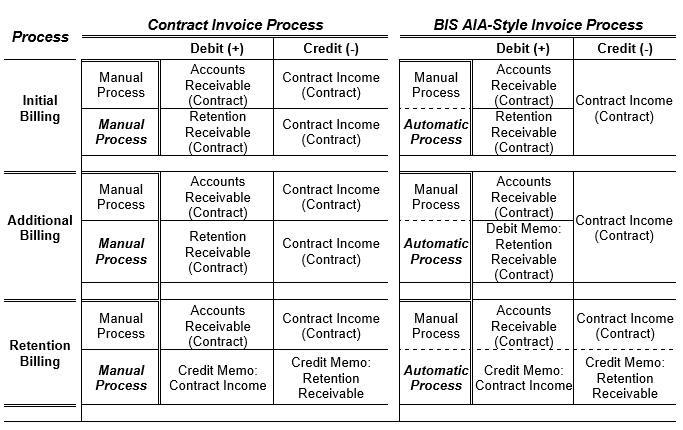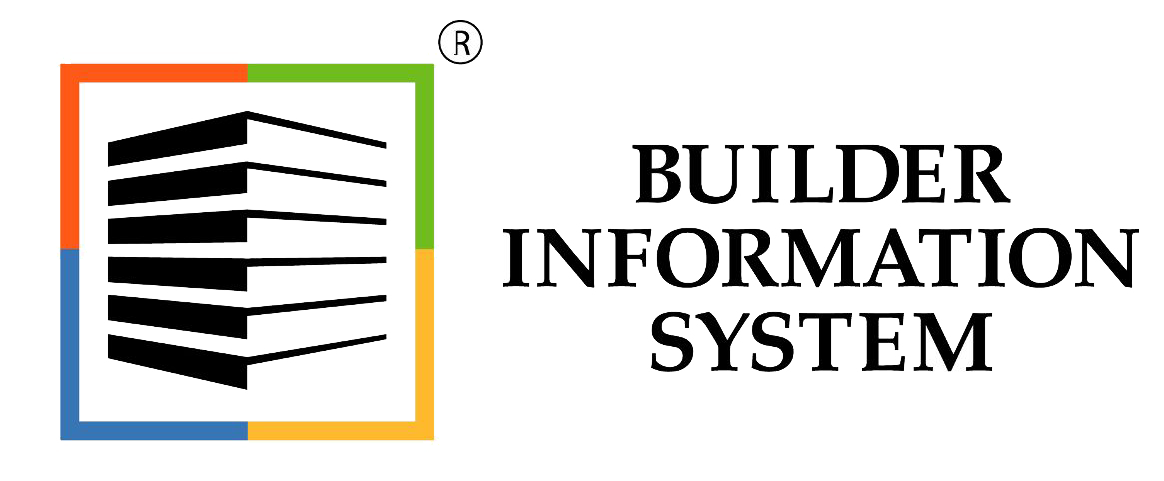(Manual vs Automatic)
BIS offers contractors a built-in form of billing that users of less capable programs have been handling manually. Even though BIS has greater capability, some users don’t implement the features contained in BIS.
With other programs, users manually enter (what BIS calls) Contract Invoices for both the amount currently due and for the Retention. In these cases, Retention is usually posted to its own Receivable account to track it separately from the current billing due. Thus, when the Retention is due, it is necessary to make entries to re-bill (or re-book) the Retention so that it moved out of Retention Receivable and into Accounts Receivable. This method also requires users to issue a manual credit memo to offset the original billing. Direct posting in the AR module between the two receivable accounts is not possible, since the AR journal and aging report would show both billings.
The BIS program provides two methods of handing the retention: one completely manual, and the other virtually automatic.
In the manual process that replicates the steps needed by general-use accounting programs, users must enter each transaction. In the BIS process, users cut the number of manual processes in half, while retaining a full trail audit of the journal entries, as well as complete accuracy in the Aging and other AR invoice and journal reports.
In addition, those using the Contract Invoice method must generate the AIA Application for Payment and Schedule of Values manually using outside programs (usually a word processor or a spreadsheet). Using the automatic process, all of these forms are generated within BIS
Finally, users can print standard Contract Invoice forms even when using the BIS AIA-style billing method.
See the next page for a series of “T” charts illustrating the processes and their postings.
The following is a comparison of the processes needed to complete the billing. Please note that the items in parenthesis are the Chart of Accounts Job Cost Types (from the Chart of Accounts setup):

